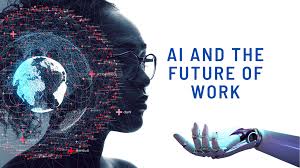In the rapidly evolving landscape of technology, spatial computing has emerged as a groundbreaking concept that promises to revolutionize how we interact with digital information and our physical surroundings. As we stand in early 2025, this innovative field is gaining momentum, offering a seamless integration of the virtual and real worlds that goes beyond traditional computing paradigms.
Spatial computing refers to technologies that enable humans to engage with computers within a three-dimensional space, breaking free from the constraints of two-dimensional screens that have dominated our interactions for decades5. This umbrella term encompasses various immersive technologies, including augmented reality (AR), virtual reality (VR), and mixed reality (MR), collectively pushing the boundaries of how we perceive and interact with digital content in our physical environment.
At its core, spatial computing aims to digitize activities involving machines, people, objects, and the environments in which they take place, optimizing actions and interactions in ways previously unimaginable4. By leveraging advanced technologies such as artificial intelligence, computer vision, and the Internet of Things, spatial computing creates a more intuitive and natural interface between humans and digital systems.
One of the key drivers behind the rise of spatial computing is the development of sophisticated hardware. Devices like the Apple Vision Pro, Microsoft HoloLens, and Magic Leap headsets are at the forefront of this revolution, enabling users to see the real world with digital objects superimposed in a way that appears three-dimensional and blends seamlessly with the physical environment3. These devices utilize an array of sensors, cameras, and specialized chips to map the user’s surroundings and create immersive experiences that were once the stuff of science fiction.
The applications of spatial computing span across various industries, offering transformative potential in fields such as manufacturing, healthcare, education, and entertainment. In industrial settings, spatial computing can optimize operations by providing workers with real-time, contextual information overlaid on their physical workspace. For example, a factory worker could access technical manuals or assembly instructions projected directly onto the machinery they’re working on, enhancing efficiency and reducing errors10.
In the realm of education, spatial computing opens up new possibilities for immersive learning experiences. Students can take virtual field trips to historical sites, interact with 3D models of complex scientific concepts, or collaborate on projects in shared virtual spaces. This technology has the power to make learning more engaging, interactive, and accessible, transcending the limitations of traditional classroom settings3.
The healthcare industry stands to benefit significantly from spatial computing advancements. Surgeons can use AR overlays during procedures to access critical patient information or visualize complex anatomical structures. Medical training can be enhanced through realistic simulations, allowing students to practice procedures in a risk-free virtual environment before working with real patients.
For everyday consumers, spatial computing is set to transform how we shop, entertain ourselves, and interact with our homes. Imagine being able to preview furniture in your living room before making a purchase, or having a virtual workspace that expands beyond the confines of your physical desk. These applications are just the tip of the iceberg when it comes to the potential of spatial computing in our daily lives10.
As spatial computing continues to evolve, it faces several challenges that need to be addressed. Issues such as privacy concerns, the need for more robust infrastructure, and the development of user-friendly interfaces are all areas that require ongoing attention. Additionally, creating compelling content and applications that fully leverage the capabilities of spatial computing will be crucial for its widespread adoption3.
Looking ahead, the future of spatial computing is bright and full of possibilities. As hardware becomes more sophisticated and software more intuitive, we can expect to see spatial computing technologies becoming increasingly integrated into our daily lives. From enhancing workplace productivity to revolutionizing entertainment and social interactions, spatial computing is poised to reshape our relationship with technology and the world around us.
In conclusion, the rise of spatial computing marks a significant shift in how we interact with digital information and our physical environment. By blending the digital and physical worlds, this technology opens up new frontiers for innovation across industries and in our personal lives. As we continue to explore and develop spatial computing capabilities, we stand on the brink of a new era in human-computer interaction, one that promises to be more intuitive, immersive, and transformative than ever before.



0 Comments